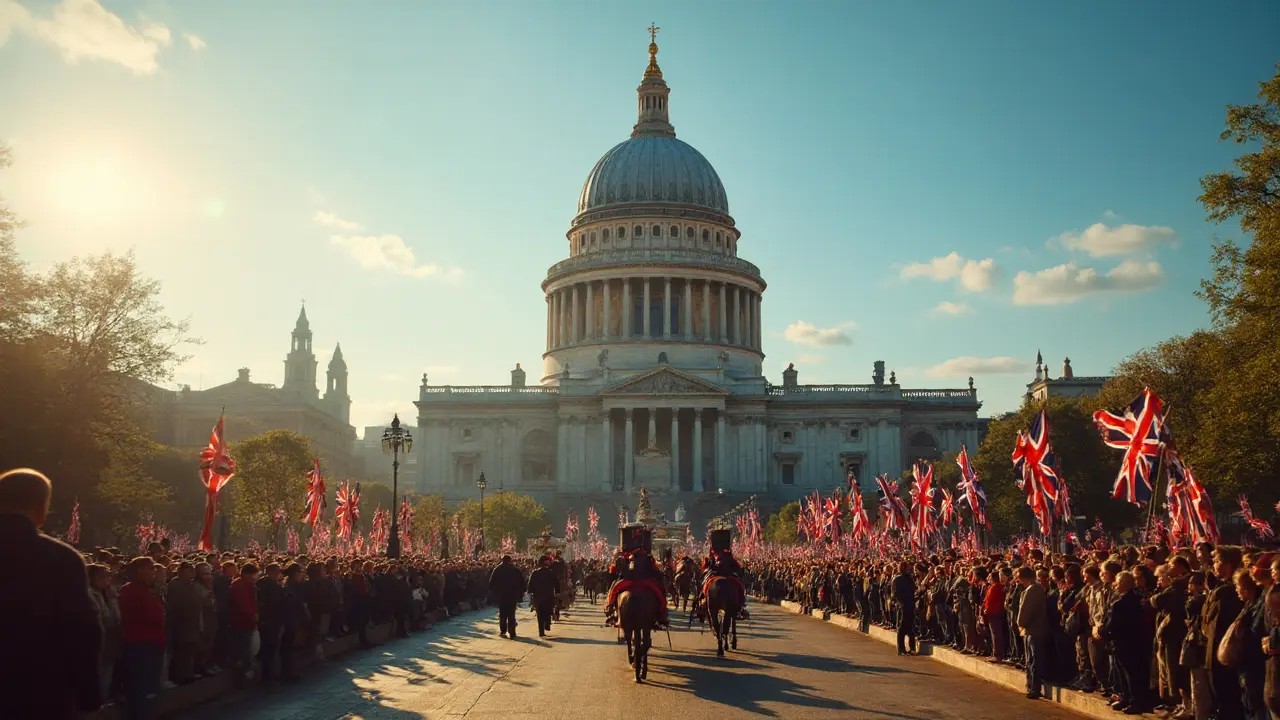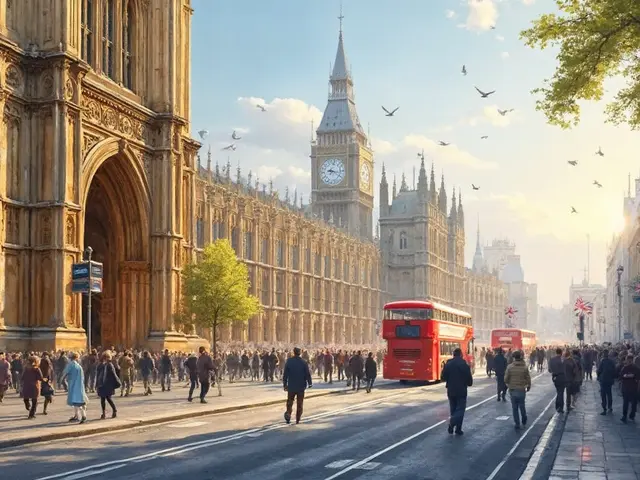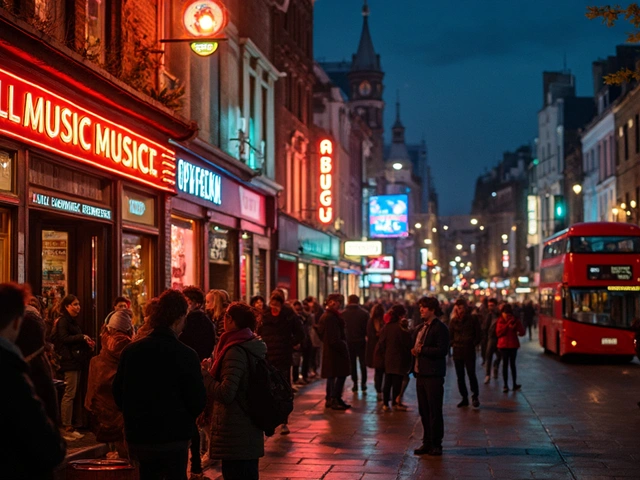If you live in London or you’re planning a royal-focused trip, you already sense it: when the country marks a big royal moment, the City of London often beats the drum. The square-mile shifts, bells thunder, and cameras turn toward that vast dome on Ludgate Hill. This guide explains the role of St Paul's Cathedral in royal celebrations-what happens, why it happens here (not just at Westminster Abbey), and how to plan your day so you actually see something rather than a sea of umbrellas.
TL;DR: Why St Paul’s Matters to Royal Life in London
Here’s the short version for busy Londoners and curious visitors:
- St Paul’s is the traditional venue for national services of thanksgiving, jubilees, and significant royal milestones-think Queen Elizabeth II’s 1977 Silver, 2002 Golden, 2012 Diamond, and 2022 Platinum Jubilee services.
- Westminster Abbey hosts coronations; St Paul’s hosts the country’s big collective “thank you” moments, public prayers, and processions through the City.
- Practical win for spectators: the City’s street grid around Ludgate Hill, Fleet Street, and St Paul’s Churchyard gives line-of-sight opportunities-and big screens often turn up in Paternoster Square.
- Expect road closures, packed Tube platforms (St Paul’s, Mansion House, Blackfriars), bell peals (Great Paul, Great Tom), and early morning queues.
- Tickets for services are limited and often invitation-only or allocated via ballots; the public action is outside: arrivals, military bands, and the ceremonial drive-past.
A Walk Through History: Royal Milestones at St Paul’s
When London wants to look up together, it picks a dome. St Paul’s has been the set-piece backdrop for royal thanksgiving since the late 17th century rebuild. The symbolism is obvious even to non-architects: Wren’s high Baroque dome dominates the City skyline like a crown. And the logistics help-broad approaches on Ludgate Hill, room for troops to form up, and space for broadcast cameras along St Paul’s Churchyard and Paternoster Row.
Some moments stamped into London’s memory:
- Queen Victoria’s 1897 Diamond Jubilee: the service was held outdoors on St Paul’s west steps so the elderly Queen could remain in her open carriage. The City streets became the nation’s pews.
- King George V’s 1911 Coronation thanksgiving and his 1935 Silver Jubilee services filled Fleet Street with flags and hats. Newspapers were on home turf-Fleet Street roared.
- VE Day thanksgiving, 1945: a nation’s relief in stone and song. The BBC microphones picked up the choir as crowds surged along Cheapside.
- Sir Winston Churchill’s 1965 state funeral: not royal, but a defining state occasion under the dome, with cranes along the Thames dipping in salute.
- 1977 Silver Jubilee for Queen Elizabeth II: the Mall had its moment, but the City had the service-London split the celebration across its two historic hearts.
- 1981 wedding of Prince Charles and Lady Diana Spencer: St Paul’s was chosen over Westminster Abbey, partly to allow a bigger congregation and a grander procession route through the City.
- 2002 Golden Jubilee, 2012 Diamond Jubilee, 2016 90th birthday service, 2022 Platinum Jubilee service: St Paul’s carried the nation’s formal gratitude while street parties bloomed in every borough.
Why St Paul’s rather than the Abbey for these moments? According to Cathedral and Royal Household protocols, the Abbey is a coronation church and often the site for royal weddings and funerals of monarchs. St Paul’s leads national thanksgiving, civic ceremonies, and moments that lean into the City’s identity-the financial and historic engine room of London. The Dean and Chapter coordinate closely with the Royal Household, the City of London Corporation, and City of London Police; plans are stitched with military precision months in advance, then tweaked days before when the Met Office forecast turns British.
Sound matters too. The bells are a signal you feel in your chest before you clock the time. Great Paul-the largest bell in Britain, restored to regular ringing in 2021-joins the peal for the biggest national occasions. Great Tom tolls for the solemn ones. If you’re anywhere near Millennium Bridge or St Paul’s tube when they roll, you’ll know.
| Year | Occasion | Royal/State Figure | Public Element | Broadcast | Notes |
|---|---|---|---|---|---|
| 1897 | Diamond Jubilee Thanksgiving | Queen Victoria | Outdoor service on west steps | Newsreel/press | Service held outside for accessibility; City packed along Fleet Street |
| 1911 | Coronation Thanksgiving | King George V | Procession through City streets | Press/photography | Emphasised Crown-City ties |
| 1935 | Silver Jubilee | King George V | Decorated routes along Ludgate Hill | Radio | Vast crowds; civic banners |
| 1945 | Thanksgiving for Victory | National service | Spontaneous street gatherings | BBC radio | Iconic dome amid bombed City |
| 1965 | State Funeral | Sir Winston Churchill | Procession; Thames crane salute | BBC TV | Not a royal event but definitive state use |
| 1977 | Silver Jubilee | Queen Elizabeth II | City procession; bells pealed | Live TV | Bridge bunting across the Thames |
| 1981 | Royal Wedding | Charles & Diana | Global TV audience; aerial shots | BBC/ITV live | Chosen for capacity and route |
| 2002 | Golden Jubilee | Queen Elizabeth II | Public viewing areas | BBC/ITV live | Thanksgiving service under the dome |
| 2012 | Diamond Jubilee | Queen Elizabeth II | Paternoster Square screens | UK networks live | Thames flotilla weekend |
| 2016 | 90th Birthday Service | Queen Elizabeth II | Restricted tickets; City viewing | Live TV | Choir spotlighted |
| 2022 | Platinum Jubilee Service | Queen Elizabeth II | Queueing from dawn | BBC/ITV/Sky live | Great Paul rung for the occasion |
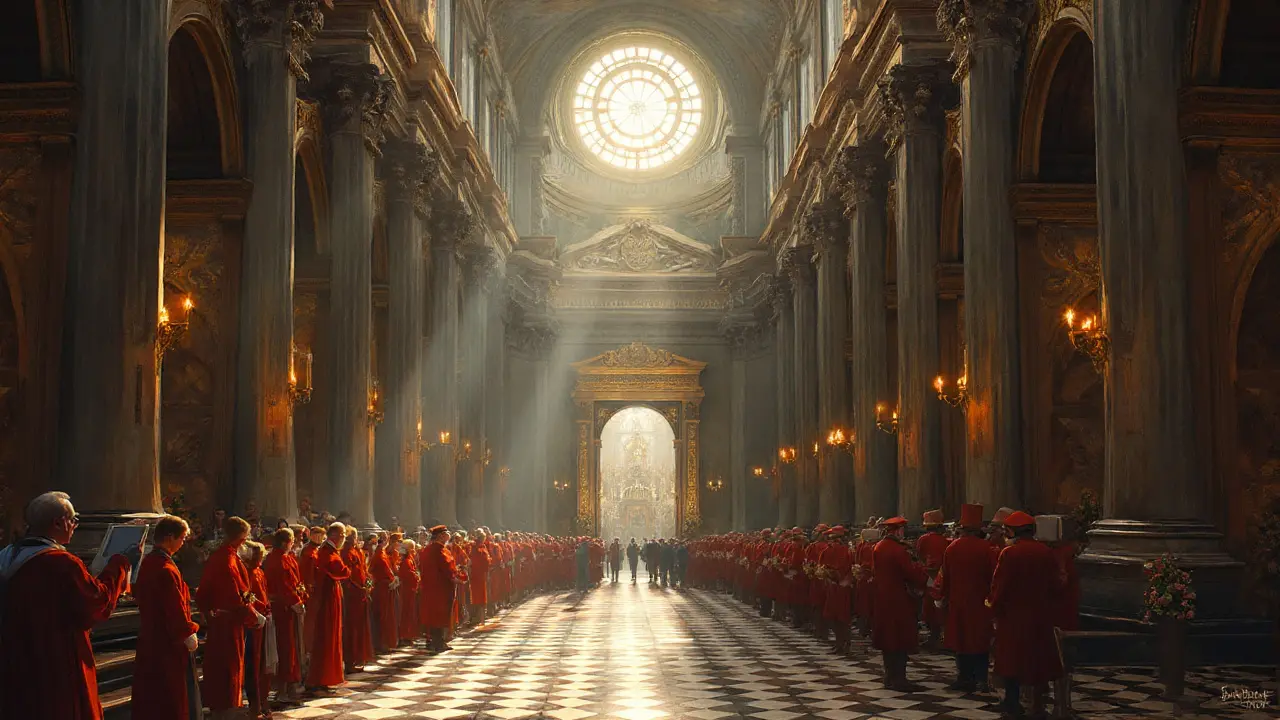
How Royal Ceremonies Work at St Paul’s (What Actually Happens)
Think of a St Paul’s royal service as three acts: arrival, liturgy, and departure-wrapped in careful choreography and tight security. From experience (I’ve queued on Ludgate Hill before sunrise), here’s the pattern you can actually use.
- Road closures and security sweep: The City of London Police and the Metropolitan Police put in barriers along Ludgate Hill, St Paul’s Churchyard, Cannon Street, and parts of Fleet Street. Expect closures from very early morning. Drones are typically banned. Bag checks pop up at entry points to viewing pens.
- Bell signals: A full peal signals celebration; Great Paul joins in for the biggest days. The tolling of Great Tom marks solemnity. If you’re on Millennium Bridge, you’ll hear the bells roll across the water.
- Arrivals and procession: The ceremonial cars-often Jaguars or state Bentleys-arrive via Ludgate Hill. Military bands and Guards dress the route. Invited guests go in through the Great West Door; press pool occupies pre-marked zones. The public get the drama outside: uniforms, medals, the moment doors open.
- The service: Inside, you’ve got the dome’s acoustics working with choir and organ. Liturgy is agreed between the Dean and Chapter and the Royal Household. You’ll often hear Te Deum or specially commissioned anthems. Readings by senior royals and civic figures (the Lord Mayor of London usually features).
- Departure and City salute: The royal party leaves to music and bells; the route back may loop towards Mansion House or along Cheapside for crowds. Cameras climb onto scissor lifts near Paternoster Square. Street sweep starts fast-City works crews are magicians.
Who decides what? The Cathedral’s Dean and Chapter shape the service; the Royal Household approves content; the City of London Corporation handles civic ceremonial and livery company involvement; police forces and the Ministry of Defence coordinate security and military presence. BBC events teams plan broadcast positions weeks out-expect cable-runs taped to paving stones the day before.
Tickets and access: For major royal services, seating is by invitation, with some public tickets sometimes allocated through ballots or partner organisations (cathedral congregations, City charities, armed forces associations). If you don’t already have a ticket in hand, assume you’re here for the arrivals and the atmosphere. Arrive early; bring patience; you’ll still get a story worth telling.
Planning Your Visit in London: Best Spots, Transport, Weather Tactics
London rewards the organised. Royal days doubly so. Here’s a plan built for the Square Mile under pressure.
Getting there (and getting home):
- Tube: St Paul’s (Central line) gets rammed from 7am on big days. Mansion House (District/Circle) and Blackfriars (District/Circle, Thameslink) are smart alternatives. City Thameslink is gold if you’re coming from south or north via Thameslink.
- Rail: Thameslink and Southeastern into Blackfriars; Great Northern via Farringdon (Elizabeth line/TL) gives a decent walk via Holborn Viaduct.
- Elizabeth line: Exit at Farringdon or Liverpool Street and walk; you’ll avoid the worst crush while staying nimble.
- River: Uber Boat by Thames Clippers to Bankside or Blackfriars Pier, then over Millennium Bridge for a cinematic arrival.
- Bus: Expect diversions on routes along Fleet Street, New Change, Queen Victoria Street. TfL usually posts advisories in the week prior.
- Driving: Don’t. Congestion Charge and closures make it a headache. If you must, plan for parking far out and swap to rail.
Vantage points that actually work:
- Ludgate Hill barriers: closest to the action for arrivals. You’ll need to be there at silly o’clock.
- Paternoster Square: often hosts large screens; decent acoustics from the bells and the crowd.
- St Paul’s Churchyard (north side): good for seeing military bands form up. Shade can be scarce-mind summer heat.
- One New Change rooftop: free access, great view of the dome. For processions, less direct, but for atmosphere shots it’s a winner. Capacity limits apply.
- Millennium Bridge: bell audio is glorious, and you get skyline shots. Police may limit lingering if it gets too busy.
What to pack and wear (a City-savvy checklist):
- Layered clothing; you’ll stand still for long stretches in changeable weather.
- Compact rain jacket; umbrellas annoy neighbours and block camera sightlines.
- Portable battery; your phone will drain on photos plus Citymapper/TfL updates.
- Water and easy snacks; queues for Pret or Leon will be long.
- Portable stool if needed; security sometimes discourages bulky camping gear.
- Clear bag policy may apply; check for restrictions on liquids and sharp objects.
Timing heuristics that save your morning:
- If the service is at 11:00, barriers fill by 07:00-08:00. Arrive before 06:30 for front-row Ludgate Hill.
- BBC/Sky camera scaffolds go up a day or two before; use them to predict angles and crowd patterns.
- The best departure views can be easier than arrivals-many people leave once the service starts. Hold your spot.
Accessibility and family-friendly tips:
- Accessible viewing spaces are usually designated near main approaches; look for stewards in hi-vis. The City’s kerbs are mostly dropped around St Paul’s Churchyard, but some tight corners remain.
- Noise-sensitive visitors: bells and bands peak around arrivals and departures. Ear protection for kids helps.
- Baby-changing: large shopping centres like One New Change have facilities; queues build fast on big days.
Photography pointers (without annoying your neighbours):
- Shoot from waist height for crowd-friendly frames; lift the camera only for seconds.
- Polarising filter helps with glare off polished cars and the Cathedral’s Portland stone.
- Respect police and steward instructions; no drones. Tripods are often restricted.
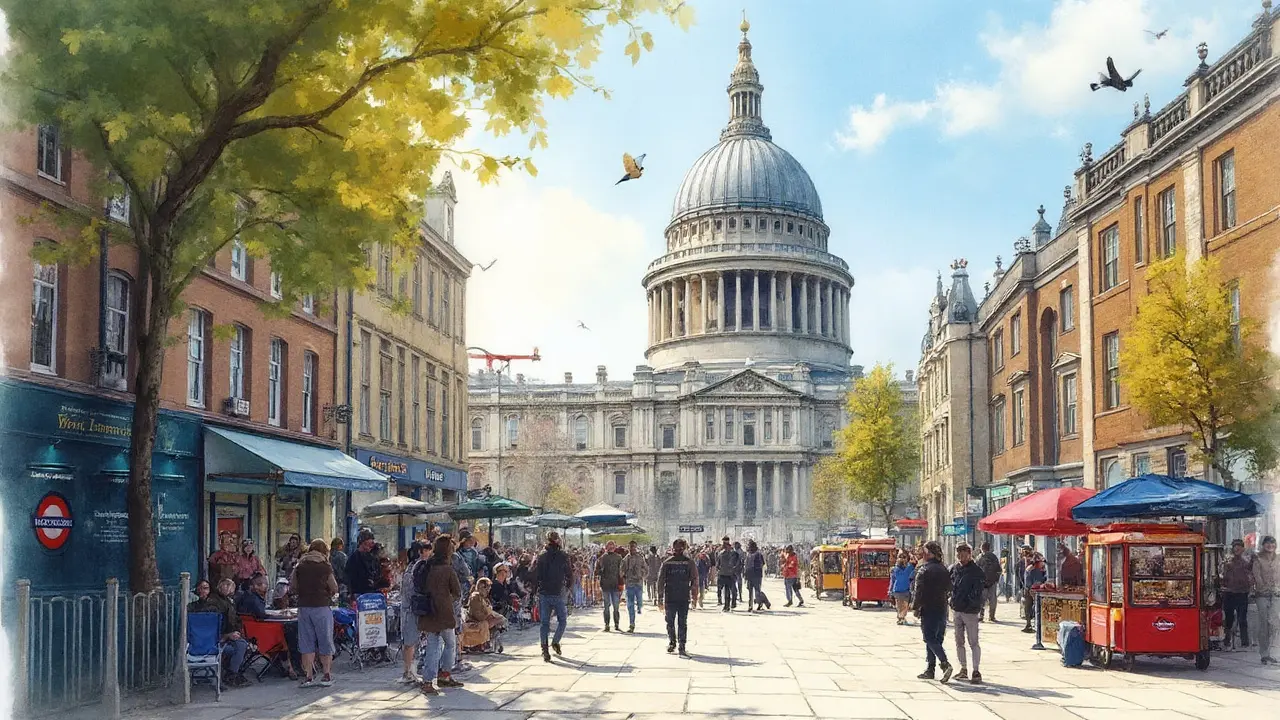
Quick Reference: Differences vs Westminster, Checklists, FAQs, Next Steps
It’s easy to muddle which London church does what. Here’s the clean split residents use when giving directions to out-of-towners.
- Westminster Abbey: Coronations; many royal weddings and funerals. Closer to Parliament and the Palace of Westminster.
- St Paul’s Cathedral: National services of thanksgiving, civic ceremonial, and select royal events (including the 1981 wedding). Rooted in the City, near Mansion House and the Guildhall.
Day-of checklist (print or save):
- Check TfL service updates and City of London road closure notices the night before.
- Pick Plan A and Plan B spots (e.g., Ludgate Hill then Paternoster Square).
- Pack layers, water, snacks, portable battery, and a compact rain jacket.
- Arrive early; agree a meet-up point if you’re with friends (signal can be patchy).
- Bring patience; you’ll be standing for stretches. Enjoy the band rehearsals-free concert.
Mini-FAQ
- Can the public attend inside? Usually only with tickets or invitations. Public viewing is focused outside along the route.
- How early should I arrive? For prime barrier spots, before dawn. For decent views, 2-3 hours ahead is workable.
- Will there be big screens? Often in Paternoster Square for major services, subject to event planning.
- Are the bells always rung? For national occasions, yes-full peal including Great Paul when appropriate; solemn events may use Great Tom.
- Is there a dress code outside? No, but avoid giant hats or golfing umbrellas-they’re unpopular in a packed pen.
- Food and loos? Portable toilets are usually installed on side streets; queues are long. Nearby cafés get slammed-buy early.
- What about security? Expect bag checks and barriers. Follow steward instructions. No drones, limited large bags.
- Where do I watch on TV? BBC One, ITV, and Sky News typically carry live coverage; BBC radio provides good descriptive audio.
Next steps tailored to you:
- Local resident: Plan errands a day earlier; move your car if you park on-street in the City fringe. Noise will peak at arrivals/departures and the bell peal window.
- Tourist with one day: Pick one vantage point and commit. Don’t spend the morning bouncing between spots-you’ll see less.
- Photographer: Scout the day before. Rehearsal timings for bands often run early morning; note where stewards plant you after 07:00.
- Family with young kids: Aim for Paternoster Square space; screens, easier exits, and nearby facilities. Bring ear defenders.
- Accessibility needs: Contact Cathedral visitor services in advance about accessible viewing; on the day, ask stewards for the nearest designated area.
Credibility and where this comes from: The Cathedral’s Dean and Chapter publish service details; the Royal Household announces royal participation and timings; City of London Police share road closures and safety guidance; TfL gives real-time transport advice; BBC events teams release broadcast plans. The pattern above matches decades of practice, refined for today’s crowd sizes and security standards.
Last thought before you set an alarm: the City’s energy on a royal day isn’t just pomp-it’s community theatre with a national script. You’ll feel it as soon as the bells roll over the Thames and the first band strikes up on Fleet Street. That’s when London stops scrolling and looks up together.

